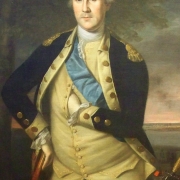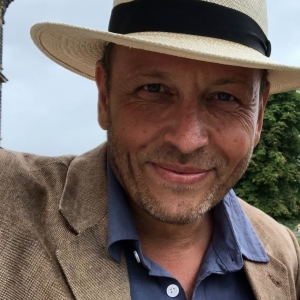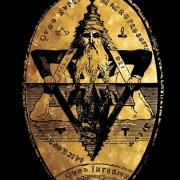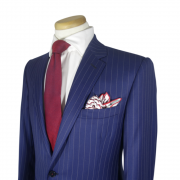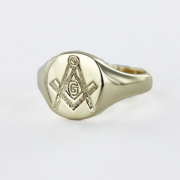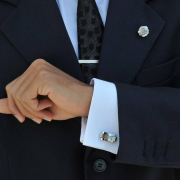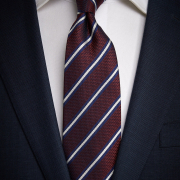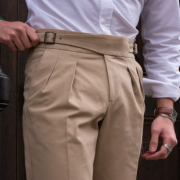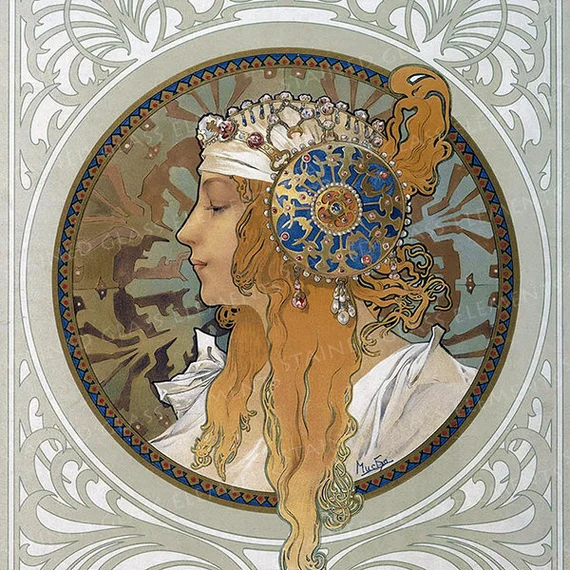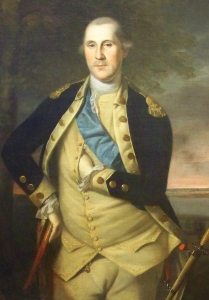
They sit or stand while holding one hand in the front of their coat. They look as if they are trying to appear stately for the photo, while also trying to avoid the painter rolling up their wallet.
With images of everyone from Napoleon to Joseph Stalin using the gesture, historians and curious art lovers have marvelled at its significance.
A Masonic tradition?
It is certainly a Monastic tradition to speak with the hand on the heart, but that does not seem to correspond entirely to the hand-in-the-vest posture.
Freemasonry's homage to the heart through the sign of the hand is explained by some Masonic historians in the fact that the rituals of Freemasonry hark back to ancient Egyptian religions.
The Egyptian Book of the Dead addressed prayers to "My heart of my mother... My heart of transformations", meaning the source of rebirths.
The mother goddess of Egypt was worshipped with different names; Isis, Hathor, Rhea, etc. She was the one to whom men "gave their hearts", signifying their sincere devotion and loyalty. As the Goddess of sacrifice, it was considered necessary by her admirers that men should sacrifice their "energy" on her behalf. The Goddess was said to take possession of the hearts of men. The tradition of the hand in clothing, on the other hand, actually dates back long before the 18th century. In modern Freemasonry, the hand is placed on the heart when one is allowed to speak, to show respect for the person being addressed. It is also used in rituals as a gesture of loyalty to the Lodge, the Master and the Brotherhood.
Bad manners in ancient Greece.
The pose goes back to classical antiquity. In some social circles in ancient Greece, people considered it disrespectful to talk with your hands outside your clothes. Sculptures from the sixth century BC therefore showed famous orators such as Solon with their hands inside their dressing gowns. Aeschines, founder of a school of rhetoric, suggested that talking with one arm outside one's chiton was bad manners, as Aeschines said in his famous speech to Timarchus (346 B.C.):
'And so decent were those public men of antiquity, Pericles [495-429 B.C.], Themistocles [524-459 B.C.], and Aristeides [530-468 B.C.] ), that talking with the arm outside the cloak, as we all do today as a matter of course, was then considered ill-mannered, and they carefully refrained from doing so. And I can point to a piece of evidence that seems to me to be very heavy and tangible. I am sure that you all sailed to Salamis and saw the statue of Solon [638-558 B.C.] there. So you can testify for yourselves that the statue standing in the Salaminian market square shows Solon with his arm in his cloak.
This is a reminder, fellow citizens, and an imitation of the attitude of Solon, showing his usual posture as he addressed the people of Athens'.
The ancient Greeks did not know that their legacy would endure for no less than 24 centuries. In the 18th century, artists looked to antiquity for inspiration.
They took their cue from the statues of famous Greek and Roman orators, posing with their hands in their cloaks.
Portraitists began to depict subjects in a similar pose, believing that it conveyed noble, calm behaviour and a good education.
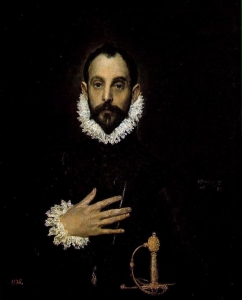
The pose was used in 18th-century British portraits as a sign that the painted figure came from the upper class.
Portraitists such as Jonathan Richardson (1667-1745) began to apply this painting theory to their realist works. Richardson and his contemporaries identified in his Essay on the Theory of Painting (1725) that the general appearance ("air") and body language ("posture") of the person depicted were the keys to an excellent portrait, Richardson and his contemporaries began to look to classical orators and the poses used in ancient sculptures for inspiration. To make it clear that the model was both "good-humoured and a suitably exalted character", the pose of "hand-in-vest" was soon adopted. Ironically, it became so popular among the English ruling class because it was thought to convey one's appearance "in a manner considered agreeable and without affectation".
The pose also became a visualisation of the English national character in the post-Restoration period; in the context of increasing Anglo-French rivalry, the pose promoted "a natural, modest and restrained image sanctioned by a classical precedent" in contrast to "the exuberant gestures of the French rhetorical style with its Catholic and absolutist associations
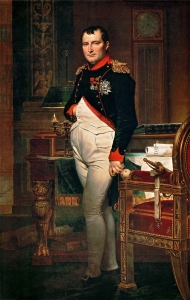
One of the most recognisable historical figures depicted in this pose was Napoleon Bonaparte himself.
Of course, the most famous portraits where "hand-in-vest" is used are of Napoleon Bonaporte (1769-1821), including Portrait of Napoleon Bonaparte, First Counselor (1804) by Jean-Auguste-Dominique Ingres (1780-1867 ), The Emperor Napoleon in His Study at the Tuileries (1812) by Jacques-Louis David (1748-1825), and the posthumous Bonaparte Crossing the Alps (1848-50) by Hippolyte Delaroche.
Several portraits of the French emperor show him with one hand in his coat, leading theorists to wonder what the reason was. In the end, it cannot be said definitively that Napoleon was a victim of itchy clothing, or suffered from the early onset of a stomach cancer that would not claim him until much later. In the case of the hidden hand, he was rather a victim of circumstance, and perhaps a victim of fashion.
Another painter, Thomas Hudsonpainted so many men in this pose that his contemporaries wondered if he was just not good at painting hands. The fact is that Napoleon and his portraitist followed a fad.
The "hand-in-glove" posture often appeared in reliefs depicting ancient Romans as the go-to for public orators.
It is said to have given them an aura of refinement and boldness, two qualities that were certainly attractive to emperors such as Napoleon. The pose became popular again in the 18th century and even became such a staple that artists who relied on it were accused of not knowing how to paint hands! Given his fame, it is probably much more logical that Napoleon would choose to be painted hand in glove. But again, it was not really his decision! The portrait that confirmed Napoleon's hidden hand, Napoleon in his study by Jaques-Louis David, was one that he did not even sit for, but rather was commissioned by a nobleman.
By the 18th century, it had become a trademark for men of quality, nobles and royals. Having a portrait painted was the privilege of a distinguished gentleman, and the hand-in-glove pose was another symbol of his stature. Other common symbols of "boasting" are a window from which one can see the subject's fine mansion, and props such as an oriental rug on the table to indicate wealth and books to indicate a scientific mind. With the advent of photography in the early 19th century, the trend continued. Great historical figures, such as US President Franklin Pierce, Joseph Stalin, Karl Marx, Simon Bolivar, the Marquis de Lafayette, Hosni Mubarak and many others, have all been immortalised with their hands in their coats.
Thierry Stravers is co-owner of Masonic Store.
He likes to combine his passion for style and elegance with his Masonic activities.
Thierry is the owner of Trenicaa marketing agency and is a board member of Loge Enlightenment No.313 O: Hoofddorp.

